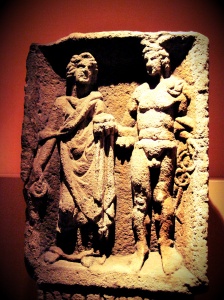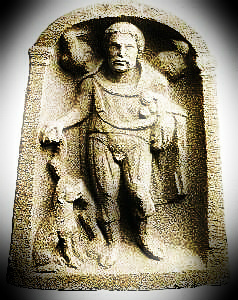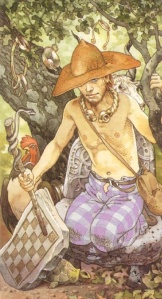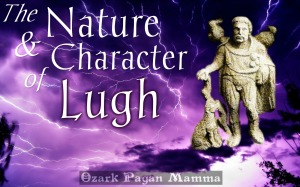Over the years I have had a few people tell me that they can’t practice their Pagan spirituality because of their circumstances. Usually it is because of living with a conservative family member. While I have never really experienced this myself, I do get the feeling it is a common problem that affects not just the young. For some folks, hiding their true spiritual beliefs may be a matter of survival if they are dependent on others for home and shelter. Whatever your reason for not being able to practice openly, I hope the following ideas and insights may be of help to you.
church
For those of you who not only are restricted from openly practicing Paganism, but are also required to attend a mainstream church, here are a couple of strategies for you…
Before entering the church, remember this silent prayer-
“Whatever way my words may stray, it is to the Old Gods I truly pray.”
Also, when reciting prayers or singing hymns, you can quietly, or in your mind, add an “s” to the end of words like god, spirit, and lord. Likewise, replace the word “one” with “the” in things you may have to recite such as the Nicene Creed… “We believe in the Gods, the Father, the Almighty, makers of heaven and earth, of all that is, seen and unseen…”
And if you go to a church where all kneel to pray, think “this I do not to submit myself, but to dwell closer to Mother Earth”.
Adopting some form of soft polytheistic viewpoint may help ease inner conflicts as well; thinking of saints and other figures as avatars/versions of older deities, for example. Adopting some form of Pagan Gnosticism as a world view may help resolve some issues as well. Some would consider Christianity but another form of Paganism.
If you’re expected to wear a cross, find one that incorporates a tree emblem, or get a Celtic or equal-armed cross, to make it more meaningful to you.
altar
Of course, one need not have any kind of altar to practice Paganism. A person could actually do everything mentally, visualizing devotionals, rituals, energy work, everything. However, it is beneficial to have some kind of touchstone in the physical world (especially if you can’t get out in nature as much as you’d like), to prevent a feeling of disconnect or “being in one’s head” all the time. If you have a small space to yourself, preferably the top of a bookshelf, then you can establish a discreet altar. You can use animal figurines to represent gods and goddesses, as most deities have animal associations. The Yule season is a great time to find altar items with a hidden meaning: a regal reindeer figure could represent Cernunnos or other antlered gods, you may find angel figurines that remind you of certain goddesses, and some rustic or unusual “Santa” figurines are reminiscent of Pagan gods.
 You may even want to adopt Christian statuary for use on your altar. How can one not think of the Star Goddess when viewing one of those statues of Mary crowned with stars and standing on a globe?
You may even want to adopt Christian statuary for use on your altar. How can one not think of the Star Goddess when viewing one of those statues of Mary crowned with stars and standing on a globe?

daily devotions
If you don’t have a lot of privacy, you’ll have to get creative with how you commemorate even day to day devotions. There are Pagan prayers that can be used with a traditional rosary, and doing so can be a ritual in itself. Also, there are traditional rosaries that have a tree for the crucifix. Prayer for your Druid Beads by Sarva Antah is a very easily memorized set of song prayers that honors nature spirits, ancestors, and deities. Yes, doing the prayers silently counts, as does simply meditating on the spirits, and no one around you would be the wiser.
holidays
How lucky we are to live in a culture that still retains so many of the older Pagan customs. We can light candles on a Yule log or decorate an Easter egg, and no one bats an eye or even thinks about how these customs relate to Paganism. Relish the special meaning these things have for you, even as those around you give them little thought. When you light a candle, or enact any of these customs, quietly or in your mind say something like, “This I do, in honor of my gods.”
You may not have a space or privacy to give offerings, but you can eat symbolic foods as a way of showing honor. Quietly or in your mind, say this blessing:
“Spirits (or Kindreds/specific deities), taste as I taste,
and let this sacred food of (name of holiday) be as an offering to you, through me.”
Some simple ideas for symbolic foods that can be easily obtained to commemorate the holidays are: an apple slice for Samhain, gingerbread for Yule, nettles or other early spring greens for Imbolc, carrots for Ostara, a strawberry for May Day, an orange slice for Midsummer, bread or berries for Lammas, and fruit salad for Harvest Home.
 magic
magic
Here is where you may feel the most limited if you are of a mind to make magic a vital part of your lifestyle. Yet, it can be done. Use ordinary objects for your “tools”, and ordinary actions as your “works of magic”. Kitchen magic can be very subtle, using a wooden spoon as your wand and the entire contents of the kitchen as materials. Don’t forget about the subtle use of color magic and visualizations. You can simply send your energy out in accordance with your goal, and that requires no materials nor spoken words at all. Yes, every little thing you do (with intention) is magic! In your mind, dedicate whatever you’re doing, toward your goal.
divination
There are a number of divination methods that require no special tools. Divination of Nature requires only your observance and intuition and includes the interpretation of dreams. In bibliomancy, one flips open a book, and reads a randomly selected passage. It is possible to use an ordinary deck of playing cards for divination. Pendulum divination can be done with only a key on a string.
learning
If you are just starting out and seeking a way to learn all you need to know, I would recommend that you first learn all you can from trusted internet sources. (See my recommendations on book and internet resources.) Try to memorize what seems important, then clear your browser history. It may be tempting to obtain a lot of books, but if you have access to a good library, reading up on mythology and philosophy will give you a better foundation in the beginning. Some libraries will even order Pagan books if you put in a request. You can read them at the library if you feel it isn’t safe to bring them home.
If you are embarking on a hidden practice, take heart. Know that the circumstances holding you back are most likely temporary as are all things in life. You may even learn and grow from the experience.






